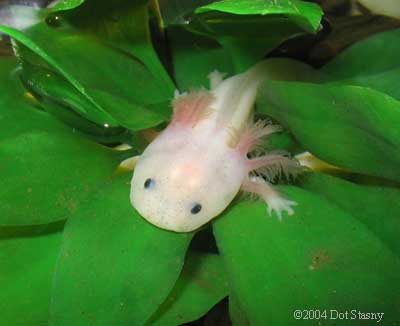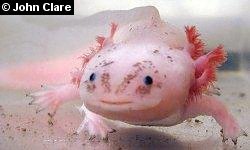
Axolotls are almost extinct in their natural habitat as a result of the introduction of predatory fish and habitat loss.

Axolotls has a flat-shaped broad head that is much wider than the body of the axolotl. They also has feathery gills which protrude from either side of the head of the axolotl, allowing it to breath under water. As with newts and salamanders, axolotls are able to regenerate limbs that become damaged or detached.

Being carnivorous, axolotl eats worms and insect larvae that develop under the surface of the water along with molluscs, crustaceans and some small species of fish.

Axolotls can live for up to 25 years although the average axolotl rarely gets much older than the age of 15. Female axolotls can lay anywhere from 100 to 1,000 eggs which are coated with a sticky substance that helps them to stick to plants and rocks in the water to keep them safe. After about a month of development, tiny axolotl babies emerge into the open water.

I chose this animal because, well, look at it! It looks so cute and adorable, so why not?
No comments:
Post a Comment